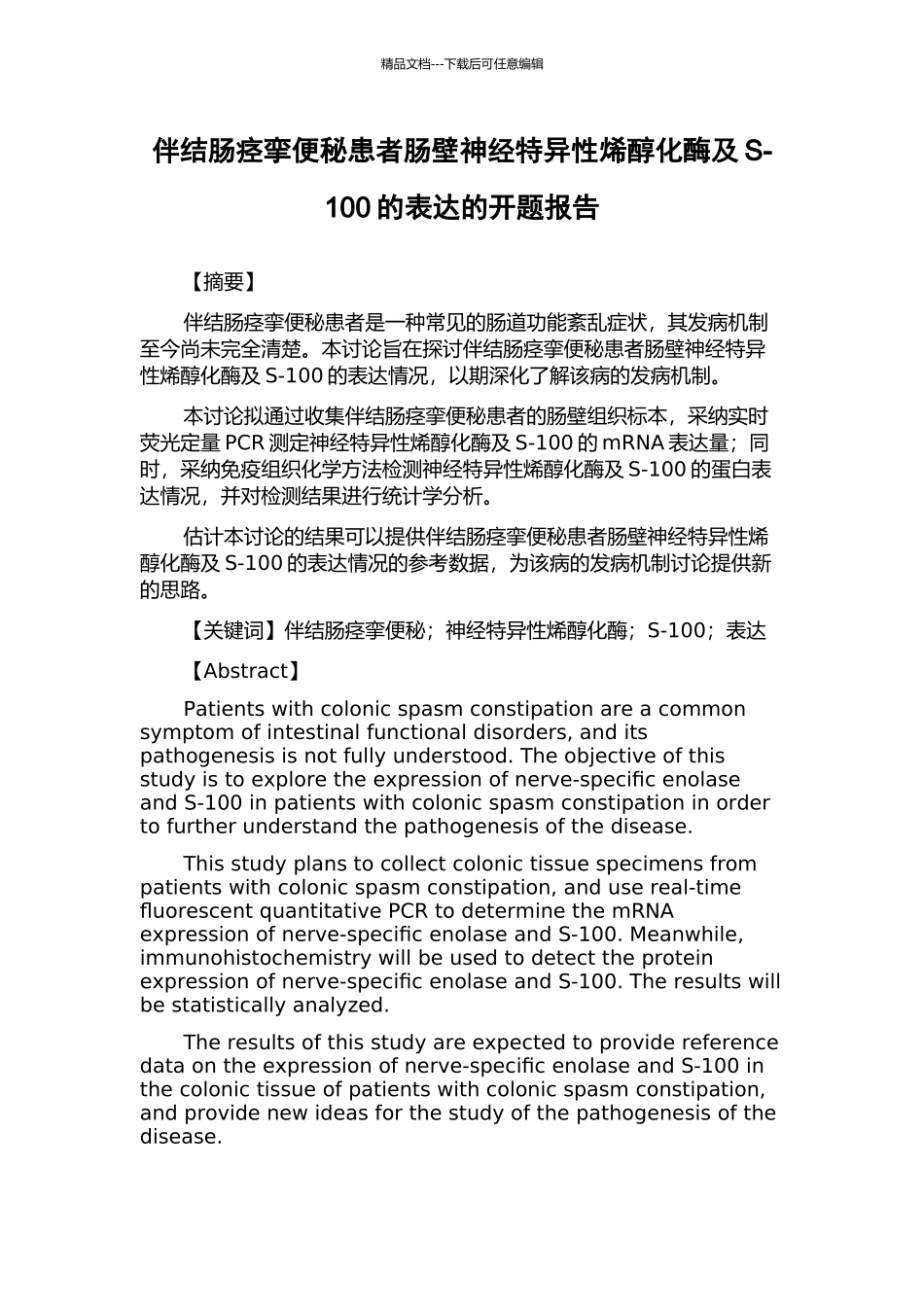精品文档---下载后可任意编辑伴结肠痉挛便秘患者肠壁神经特异性烯醇化酶及 S-100 的表达的开题报告【摘要】伴结肠痉挛便秘患者是一种常见的肠道功能紊乱症状,其发病机制至今尚未完全清楚。本讨论旨在探讨伴结肠痉挛便秘患者肠壁神经特异性烯醇化酶及 S-100 的表达情况,以期深化了解该病的发病机制。本讨论拟通过收集伴结肠痉挛便秘患者的肠壁组织标本,采纳实时荧光定量 PCR 测定神经特异性烯醇化酶及 S-100 的 mRNA 表达量;同时,采纳免疫组织化学方法检测神经特异性烯醇化酶及 S-100 的蛋白表达情况,并对检测结果进行统计学分析。估计本讨论的结果可以提供伴结肠痉挛便秘患者肠壁神经特异性烯醇化酶及 S-100 的表达情况的参考数据,为该病的发病机制讨论提供新的思路。【关键词】伴结肠痉挛便秘;神经特异性烯醇化酶;S-100;表达【Abstract】Patients with colonic spasm constipation are a common symptom of intestinal functional disorders, and its pathogenesis is not fully understood. The objective of this study is to explore the expression of nerve-specific enolase and S-100 in patients with colonic spasm constipation in order to further understand the pathogenesis of the disease.This study plans to collect colonic tissue specimens from patients with colonic spasm constipation, and use real-time fluorescent quantitative PCR to determine the mRNA expression of nerve-specific enolase and S-100. Meanwhile, immunohistochemistry will be used to detect the protein expression of nerve-specific enolase and S-100. The results will be statistically analyzed.The results of this study are expected to provide reference data on the expression of nerve-specific enolase and S-100 in the colonic tissue of patients with colonic spasm constipation, and provide new ideas for the study of the pathogenesis of the disease.精品文档---下载后可任意编辑【Keywords】colonic spasm constipation; nerve-specific enolase; S-100; expression

